的点评
Iconic
Chiesa di Santa Maria Assunta e Cripta Medievale的点评
点评:The main reason we visited the Chiesa di Santa Maria Assunta or Church of Santa Maria Assunta was due to our guide’s suggestion to do so.
After the ferry docked in Positano a quaint town on the Amalfi Coast we spent some time strolling about. We never went too far into the town though for two reasons. First the town is built in a narrow ravine opening on the water. The further one goes inland, the higher one climbs and the steeper the climb becomes. Neither of us we really up for this. Secondly, we didn’t want to stray too far from the ferry docks. The ferry for Amalfi was leaving at a set time and as charming as Positano was we didn’t want to miss seeing this town as well. Our guide had suggested visiting the church for two reasons as he put it. First it was beautiful inside and out, probably as much as the better known one further down the coast in Amalfi. Second, unlike that one this one was free to enter.
We’d seen the church from the ferry as it made its approach to the dock in Positano. It was hard to miss, with its ornate mosaic tiled dome showing above the other buildings. The church was constructed in the 12th century, apparently on the ruins of an old Roman villa.
Aside from the dome, the design of the church itself is pretty basic and painted in a light pastel shade similar to many of the other buildings. In the front courtyard is a fairly “recent” addition a bell tower constructed in the 18th century.
This is an active church with regularly scheduled masses and there were a few parishioners present even on a weekday morning when we entered. On weekends apparently it is a popular choice for weddings.
Inside one is struck by how stark and simple it is. Unlike some other Italian churches, the walls for the most part are not adorned with numerous elaborate frescos and tapestries here. The few that are present are tastefully placed.
One of the main attractions inside is the Black Madonna and child Icon above the main alter. It was constructed in Byzantium in the 12th century.
According to legend in the 13th century it was stolen by pirates who were skirting the coast of Italy when they ran into a severe storm. Apparently, they heard the figure of Mary on the Icon say “posa” or put me down and they immediately sailed into a nearby sheltering bay where the town of Positano is located, and gave the small fishing village that had existed since 100 BC its new name.
After the ferry docked in Positano a quaint town on the Amalfi Coast we spent some time strolling about. We never went too far into the town though for two reasons. First the town is built in a narrow ravine opening on the water. The further one goes inland, the higher one climbs and the steeper the climb becomes. Neither of us we really up for this. Secondly, we didn’t want to stray too far from the ferry docks. The ferry for Amalfi was leaving at a set time and as charming as Positano was we didn’t want to miss seeing this town as well. Our guide had suggested visiting the church for two reasons as he put it. First it was beautiful inside and out, probably as much as the better known one further down the coast in Amalfi. Second, unlike that one this one was free to enter.
We’d seen the church from the ferry as it made its approach to the dock in Positano. It was hard to miss, with its ornate mosaic tiled dome showing above the other buildings. The church was constructed in the 12th century, apparently on the ruins of an old Roman villa.
Aside from the dome, the design of the church itself is pretty basic and painted in a light pastel shade similar to many of the other buildings. In the front courtyard is a fairly “recent” addition a bell tower constructed in the 18th century.
This is an active church with regularly scheduled masses and there were a few parishioners present even on a weekday morning when we entered. On weekends apparently it is a popular choice for weddings.
Inside one is struck by how stark and simple it is. Unlike some other Italian churches, the walls for the most part are not adorned with numerous elaborate frescos and tapestries here. The few that are present are tastefully placed.
One of the main attractions inside is the Black Madonna and child Icon above the main alter. It was constructed in Byzantium in the 12th century.
According to legend in the 13th century it was stolen by pirates who were skirting the coast of Italy when they ran into a severe storm. Apparently, they heard the figure of Mary on the Icon say “posa” or put me down and they immediately sailed into a nearby sheltering bay where the town of Positano is located, and gave the small fishing village that had existed since 100 BC its new name.
翻译:我们参观圣玛利亚升天教堂的主要原因是我们的导游建议我们这样做。
渡轮停靠在阿马尔菲海岸一个古朴的小镇波西塔诺后,我们花了一些时间四处闲逛。但我们从未深入小镇,原因有二。首先,小镇建在水面上一个狭窄的峡谷中。越往内陆走,爬得越高,坡度也越陡。我们俩都不太愿意这样做。其次,我们不想离渡轮码头太远。前往阿马尔菲的渡轮在固定时间出发,尽管波西塔诺很迷人,但我们也不想错过参观这个小镇的机会。我们的导游建议参观教堂,原因有两个。首先,教堂内外都很漂亮,可能和阿马尔菲海岸更著名的教堂一样漂亮。其次,与那座教堂不同,这座教堂可以免费进入。
我们在渡轮驶向波西塔诺码头时看到了这座教堂。它很难被忽视,其华丽的马赛克瓷砖圆顶高于其他建筑。这座教堂建于 12 世纪,显然建在一座古罗马别墅的废墟上。
除了圆顶之外,教堂本身的设计非常简单,涂上了与其他许多建筑相似的浅色粉彩。前院是一个相当“近期”的附加建筑,是一座建于 18 世纪的钟楼。
这是一座活跃的教堂,定期举行弥撒,我们进去的时候,即使是在工作日的早上,也有一些教区居民在场。在周末,这里显然是举办婚礼的热门选择。
走进教堂,你会被它朴素而简单的风格所震撼。与其他一些意大利教堂不同,这里的墙壁大部分都没有装饰大量精美的壁画和挂毯。少数现存的壁画和挂毯摆放得很有品位。
教堂内部的主要景点之一是主祭坛上方的黑色圣母子圣像。它建于 12 世纪的拜占庭。
据传说,13 世纪时,海盗在意大利海岸附近遭遇暴风雨时偷走了它。据说,他们听到圣像上的圣母像说“posa”或“放下我”,于是立即驶入附近的避风港,波西塔诺镇就位于那里,并给这个公元前 100 年就存在的小渔村起了新名字。
渡轮停靠在阿马尔菲海岸一个古朴的小镇波西塔诺后,我们花了一些时间四处闲逛。但我们从未深入小镇,原因有二。首先,小镇建在水面上一个狭窄的峡谷中。越往内陆走,爬得越高,坡度也越陡。我们俩都不太愿意这样做。其次,我们不想离渡轮码头太远。前往阿马尔菲的渡轮在固定时间出发,尽管波西塔诺很迷人,但我们也不想错过参观这个小镇的机会。我们的导游建议参观教堂,原因有两个。首先,教堂内外都很漂亮,可能和阿马尔菲海岸更著名的教堂一样漂亮。其次,与那座教堂不同,这座教堂可以免费进入。
我们在渡轮驶向波西塔诺码头时看到了这座教堂。它很难被忽视,其华丽的马赛克瓷砖圆顶高于其他建筑。这座教堂建于 12 世纪,显然建在一座古罗马别墅的废墟上。
除了圆顶之外,教堂本身的设计非常简单,涂上了与其他许多建筑相似的浅色粉彩。前院是一个相当“近期”的附加建筑,是一座建于 18 世纪的钟楼。
这是一座活跃的教堂,定期举行弥撒,我们进去的时候,即使是在工作日的早上,也有一些教区居民在场。在周末,这里显然是举办婚礼的热门选择。
走进教堂,你会被它朴素而简单的风格所震撼。与其他一些意大利教堂不同,这里的墙壁大部分都没有装饰大量精美的壁画和挂毯。少数现存的壁画和挂毯摆放得很有品位。
教堂内部的主要景点之一是主祭坛上方的黑色圣母子圣像。它建于 12 世纪的拜占庭。
据传说,13 世纪时,海盗在意大利海岸附近遭遇暴风雨时偷走了它。据说,他们听到圣像上的圣母像说“posa”或“放下我”,于是立即驶入附近的避风港,波西塔诺镇就位于那里,并给这个公元前 100 年就存在的小渔村起了新名字。
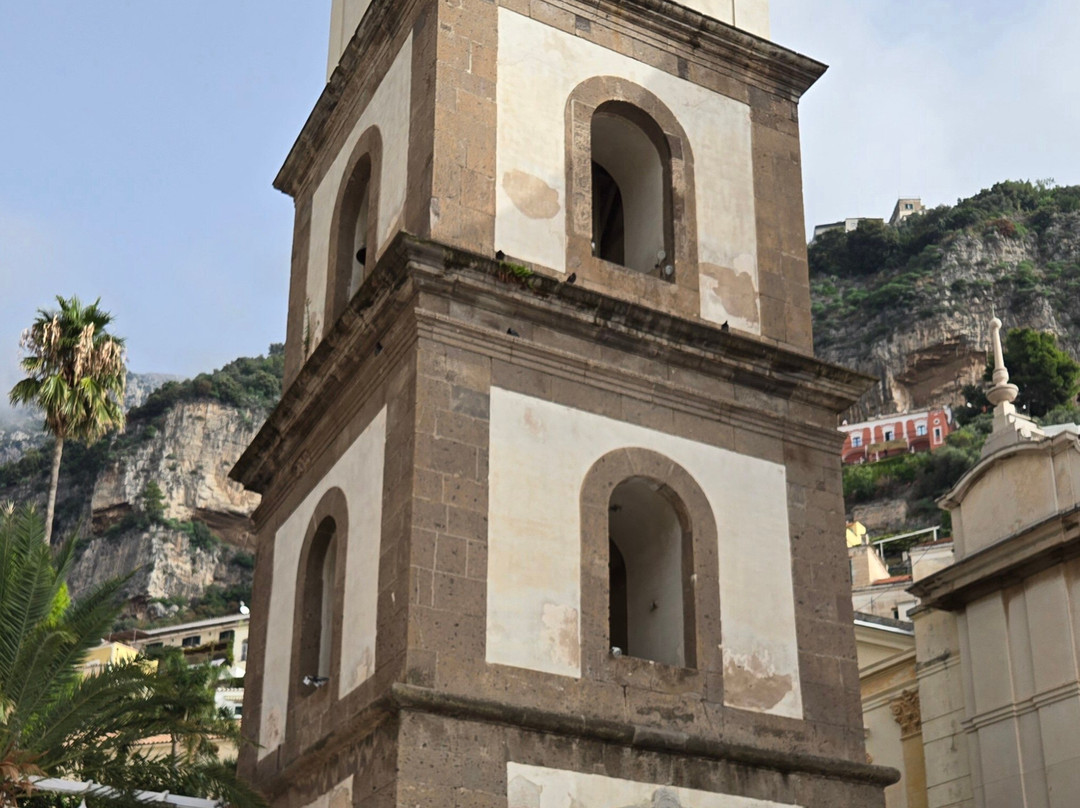
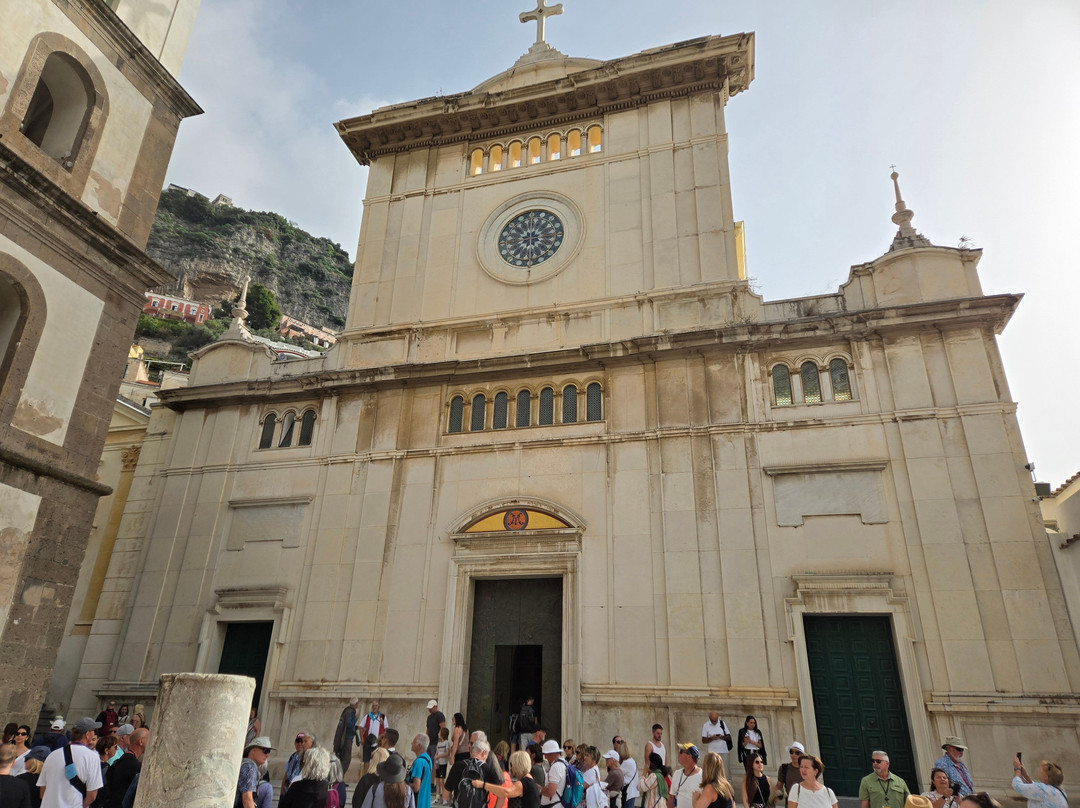
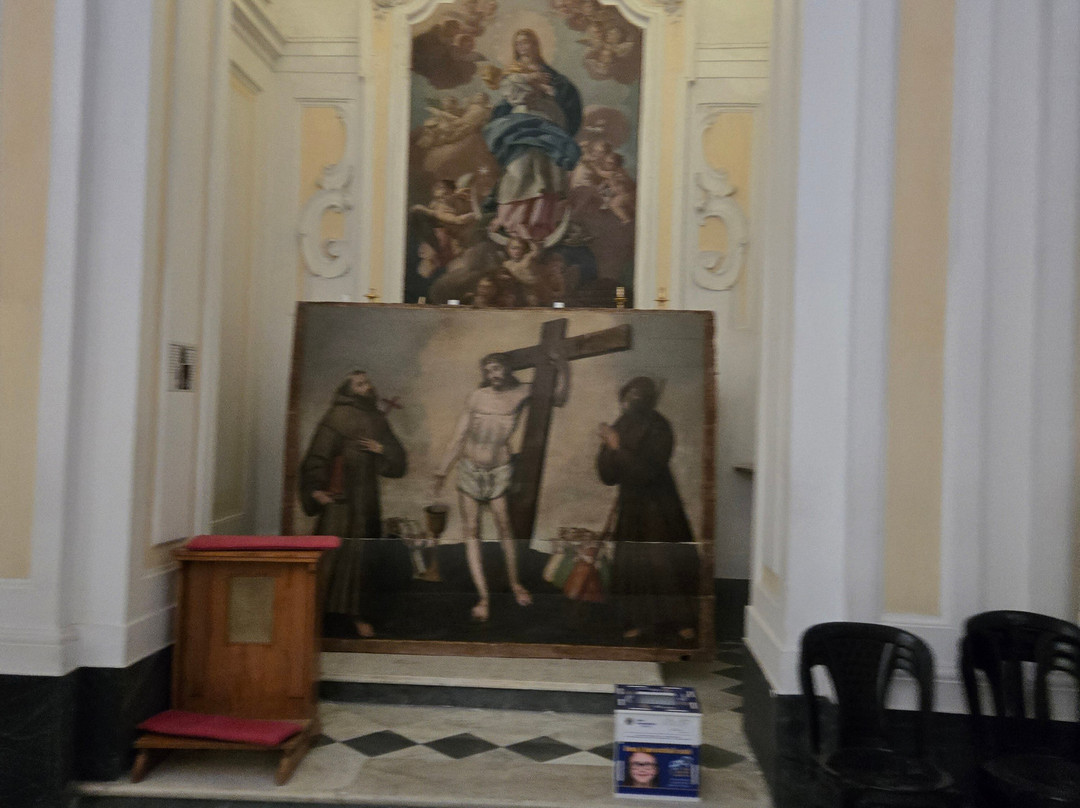
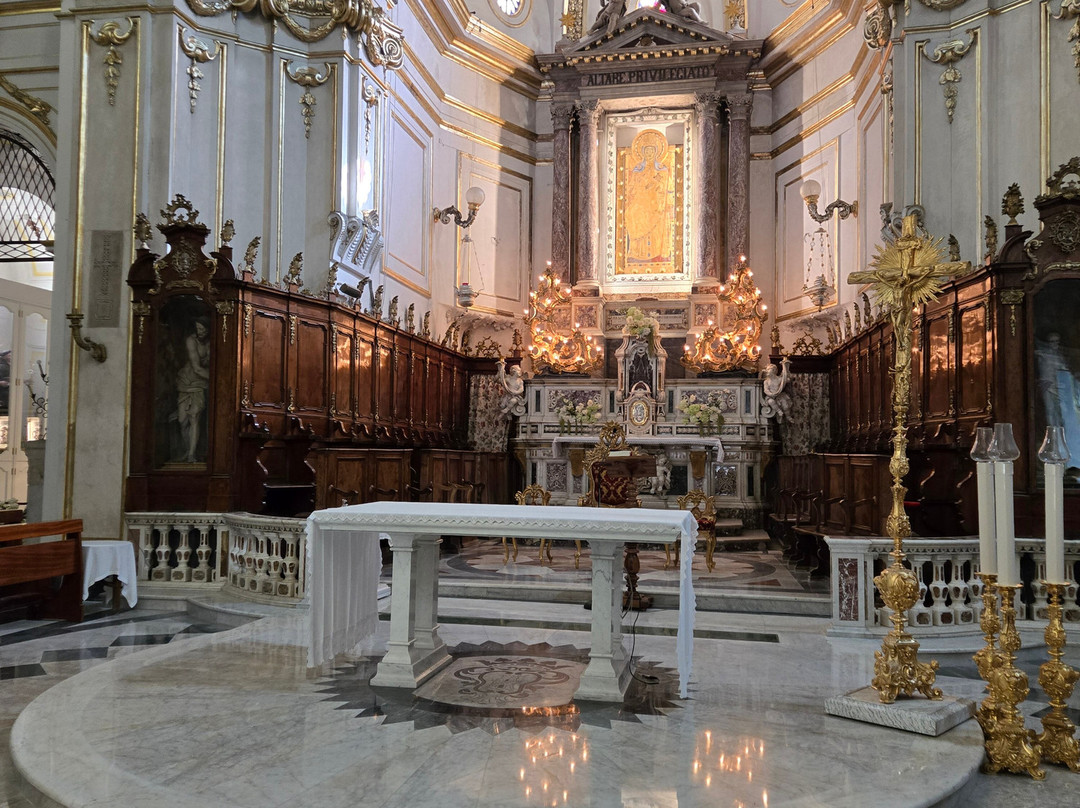
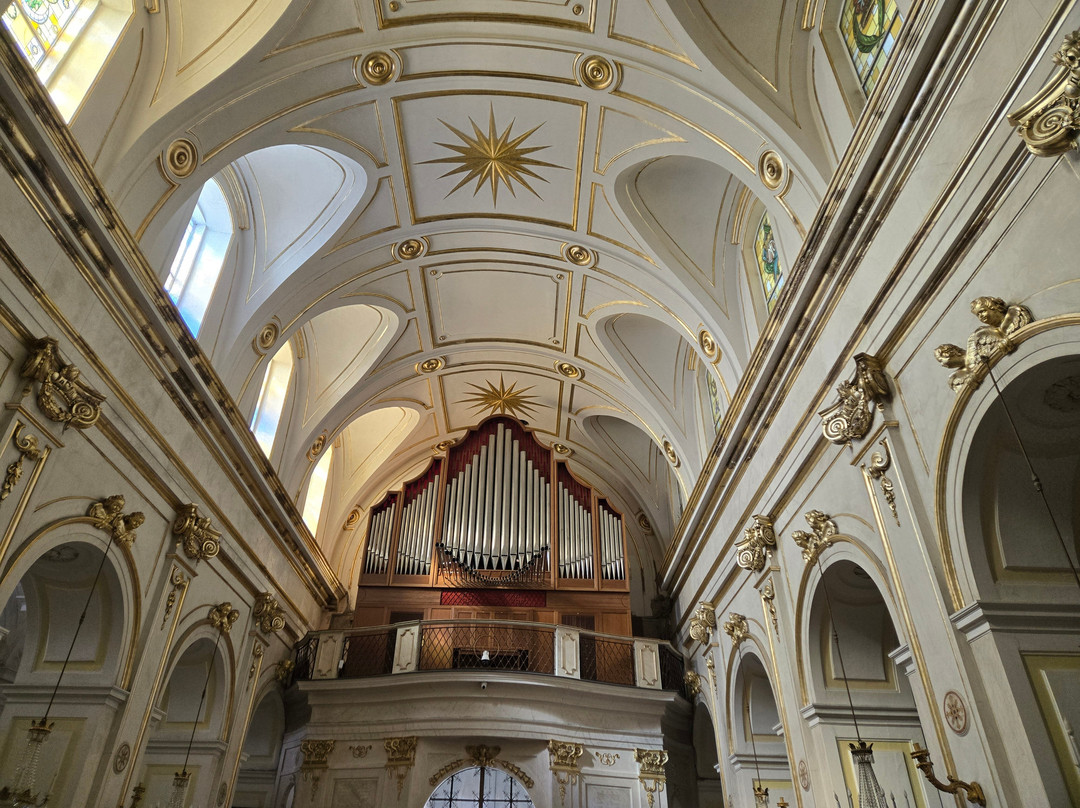
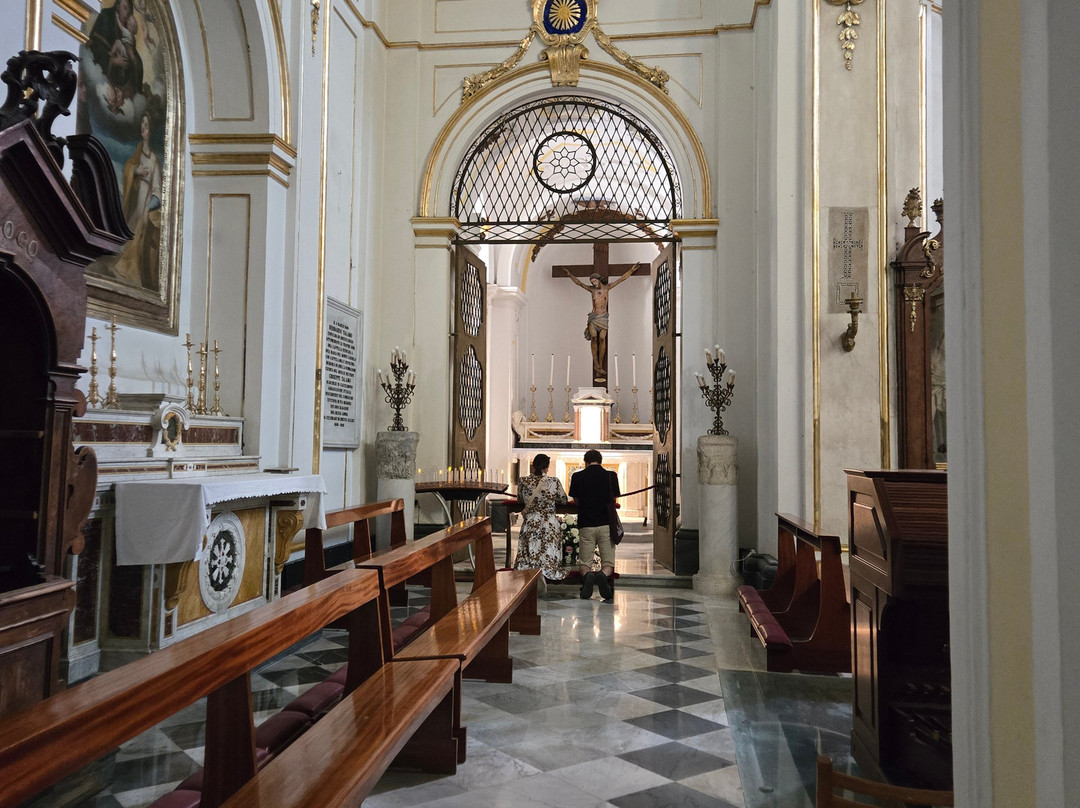
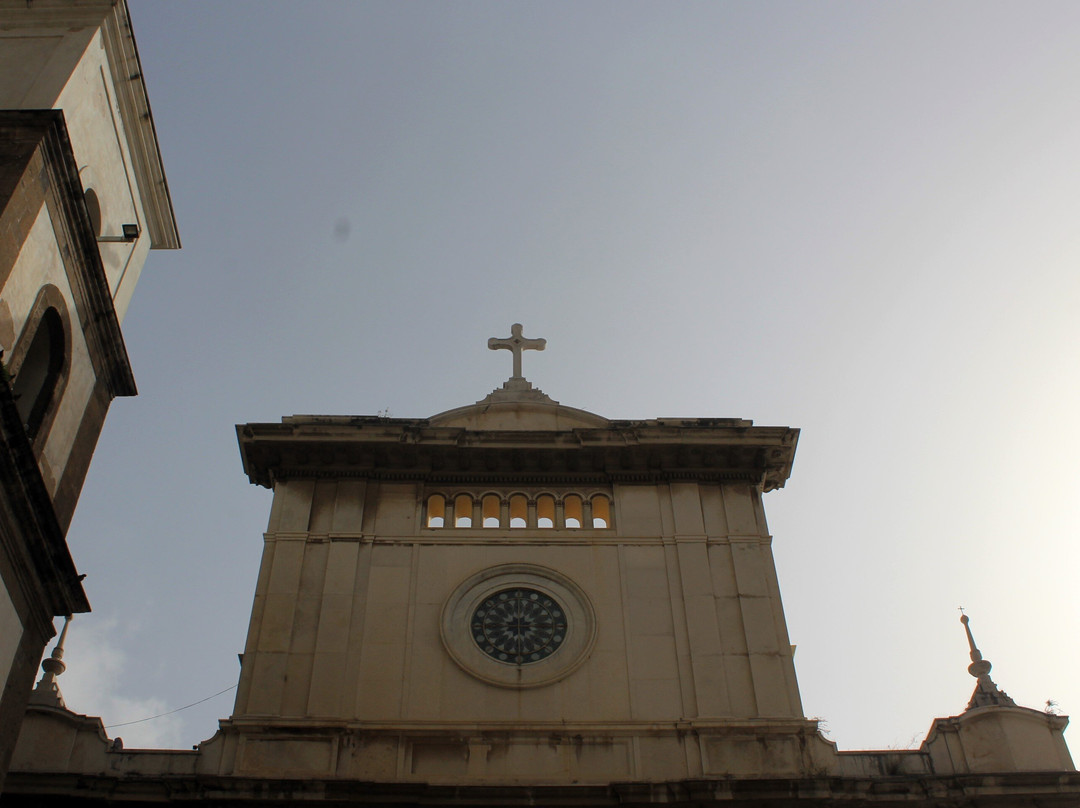
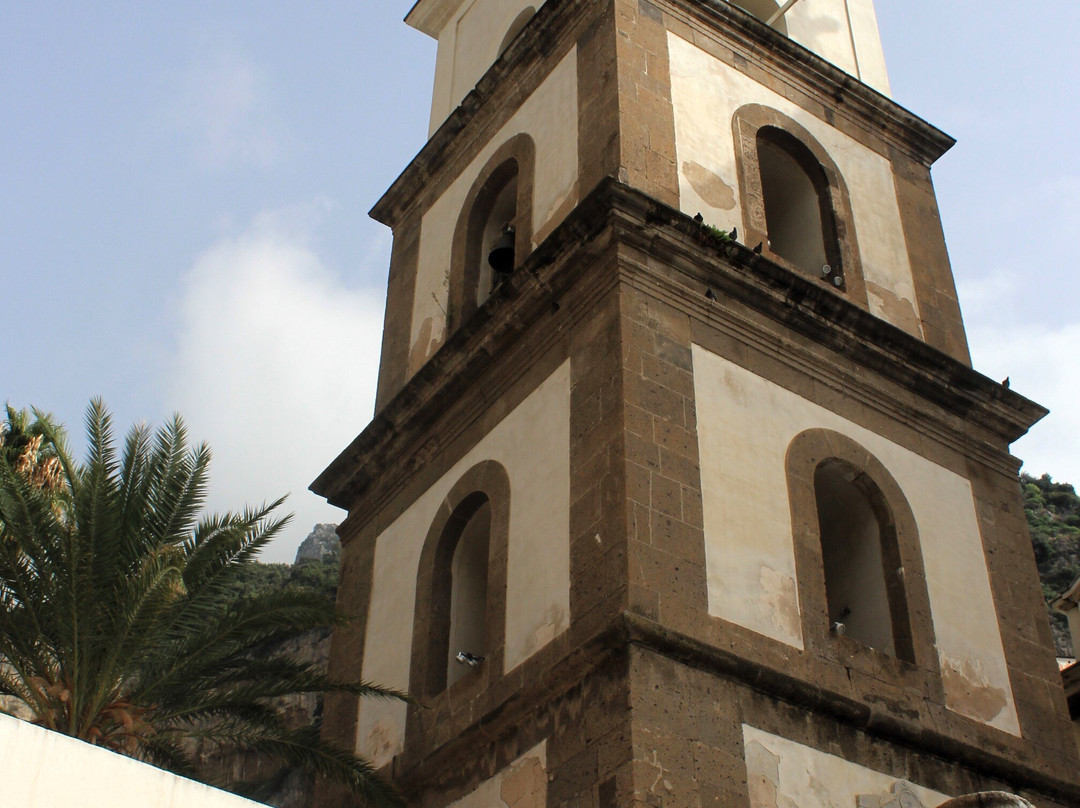
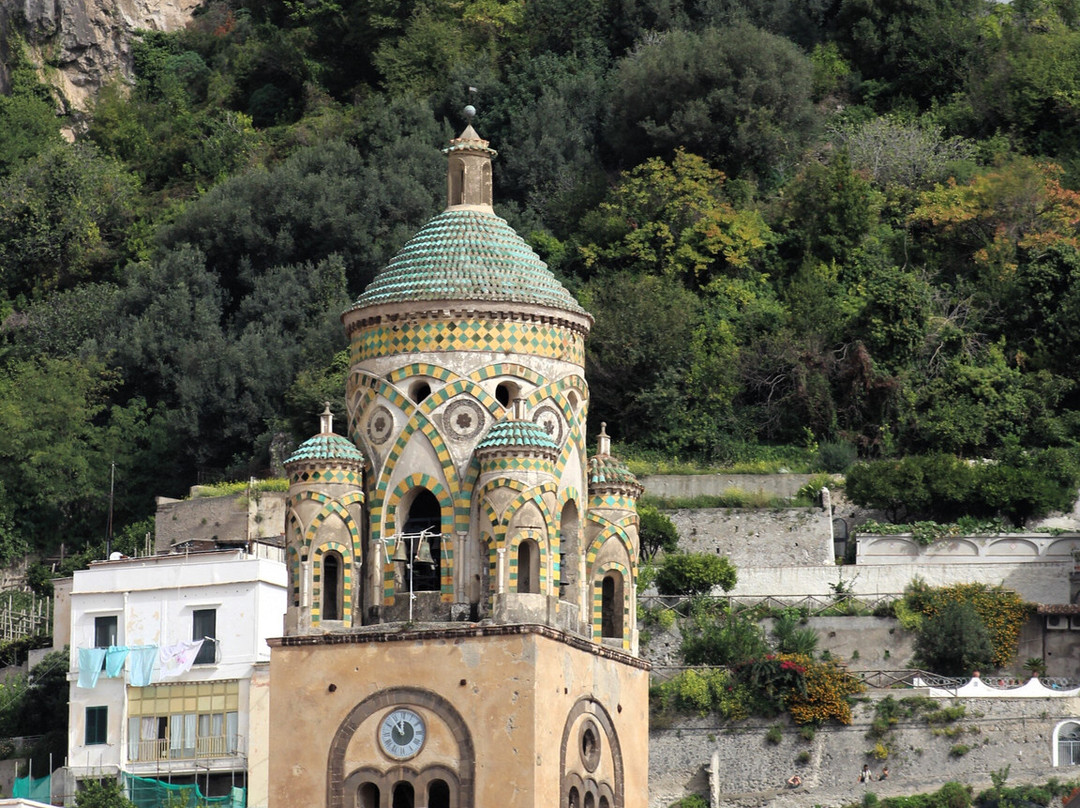
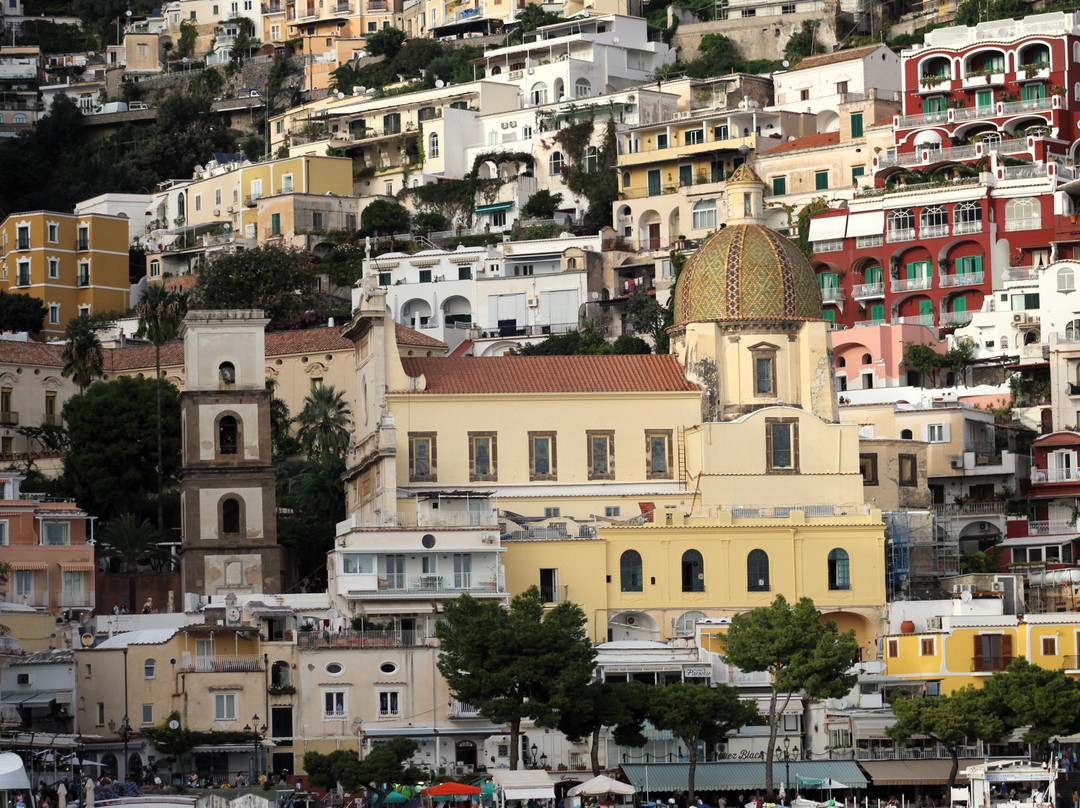
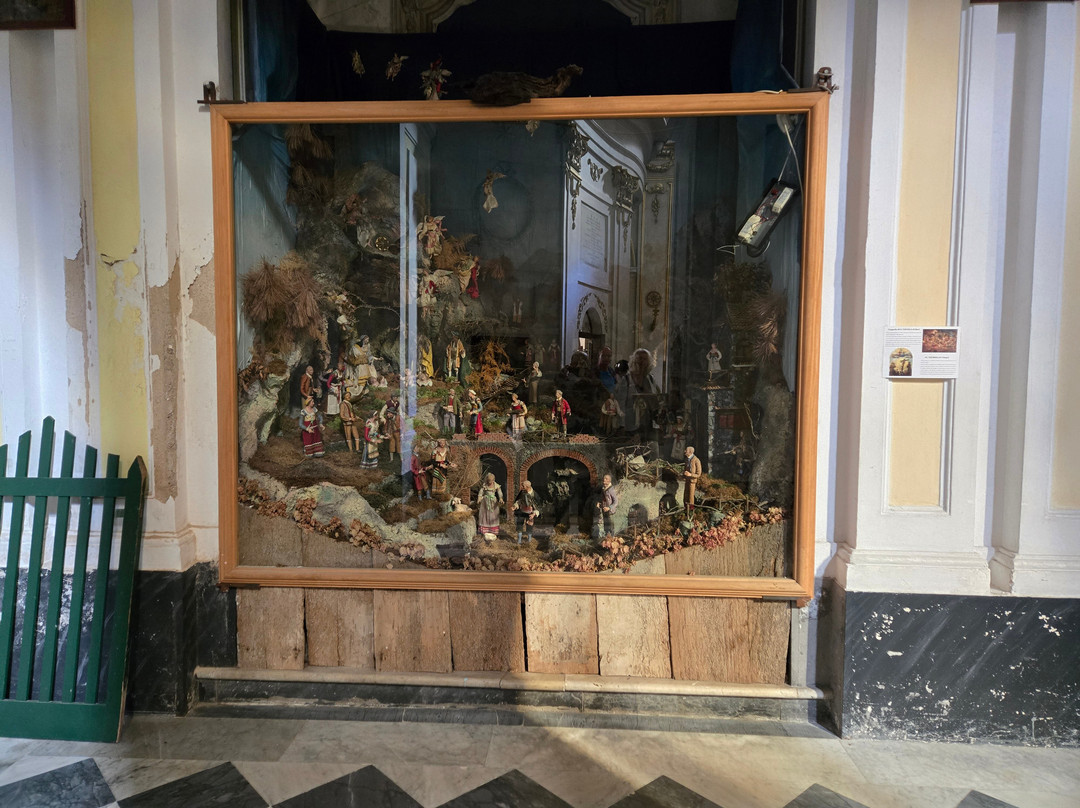
此点评仅代表旅行者个人的主观意见,并不代表TripAdvisor以及其合作方的意见。
关于我们
|
新闻动态
|
商务合作
|
会员中心
|
业主中心
|
业主通
|
常见问题
|
意见反馈
|
联系我们
|
营业执照
© 2025 Tripadvisor 版权所有。
使用条款 |隐私政策 |网站工作原理
部分照片由 VFM Leonardo 提供。
* Tripadvisor不是旅行社,也不是旅游预订服务代理商。我们提供免费、客观、公正的旅游资讯服务。 (显示更多)
TripAdvisor LLC 既不是预订代理商,也不是旅游运营商,不会向网站用户收取任何服务费。 按照规定,在 Tripadvisor 发布机票价格、游览和旅行套餐的合作伙伴(航空公司、旅行提供商及预订代理商),其标价须包含所有费用和附加费用。 例如, 机场出入境税费、消费税与其他服务费、手续费、杂费及附加费用。 当您向我们的某个合作伙伴进行预订时,请务必查阅他们的网站以了解当地行政部门要求的所有适用费用的具体情况。 除非另有说明,机票价格通常指的是一个人的价格(以人民币计)。
为方便起见,TripAdvisor LLC 根据从我们的预订合作伙伴获取的空房率计算每个酒店的均价。 对于游览和景点来说,所显示价格通常是每位成人的最低可用价格。 对于列出的任何旅行套餐或优惠,TripAdvisor LLC 无法保证任何特定的费率或价格。 此外,酒店均价每晚会更新,并以您的首选币种表示(使用现行汇率)。 由于这些已换算的价格是预估价格,因此,有关具体金额和币种请与预订网站进行核实。
此外,TripAdvisor LLC 无法保证我们网站上宣传的价格随时有效。 标价可能需要预订一定天数才能生效,或有不可用日期、使用条件或限制。
TripAdvisor公司对外部网站的内容一概不负责。优惠价格中不含税和其他费用。
ICP证:沪B2-20200433
沪ICP备20013175号
 沪公网安备31010502005427号
沪公网安备31010502005427号鹰程信息技术(上海)有限公司
货币/国家及地区
¥CNY
中国

